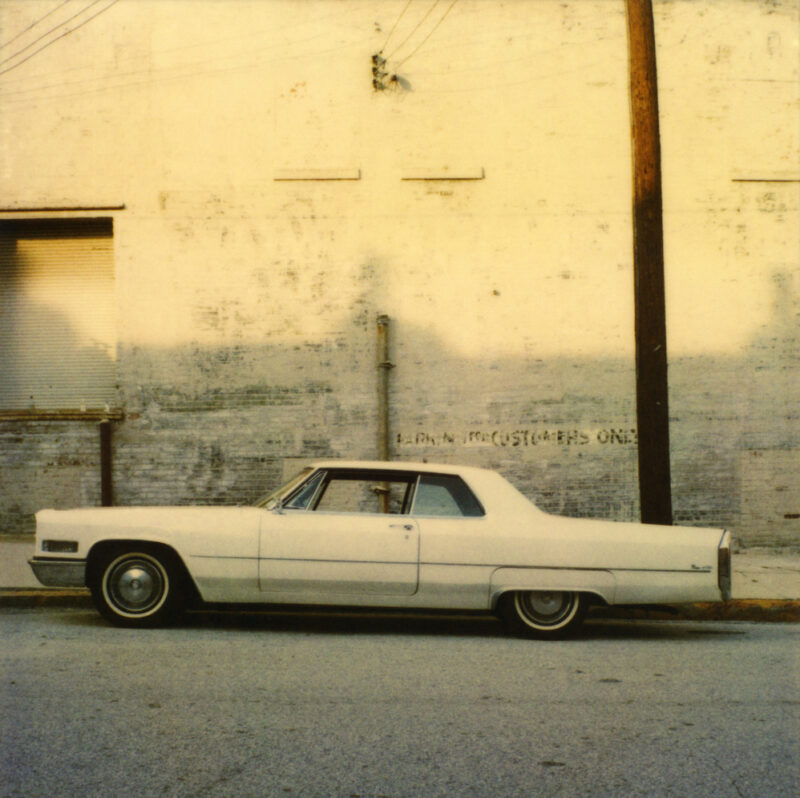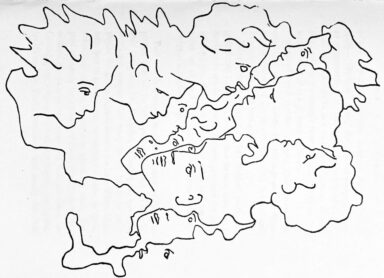Collectible DRY spoke with some of the artists involved in Re-Signify Part II: the multidisciplinary showcase where art and fashion collided, paving the way for a new chapter in the history of the Italian Maison
Words by: Gilda Bruno
Earlier this month, we gave you an introduction to Re-Signify Part II, the second chapter of Pierpaolo Piccioli’s ‘re-signification’ process; the creative director’s attempt to rewrite the rules by which Valentino plays through the development of a space where art and fashion can grow in reciprocal dialogue. On display between October 17 and November 7 in Beijing’s SKP South’s T-10 exhibition space, the multidisciplinary retrospective turned the spotlight onto extravagant archive pieces from the Italian Maison juxtaposing them with the work of some of the most inspiring personalities on the international art scene. Today Collectible DRY allows you to step inside the showcase one last time thanks to the in-depth testimonials of the participating artists and the reflections of curators Jacopo Bedussi and Mariuccia Casadio.
When asked about the criteria based on which the shortlisted artists were selected to take part in this project, the two said that “the choice fell on artists who, through multiple and incoherent paths — because poetically personal — and languages, found themselves questioning the themes that had been extrapolated from the exploration and dissection of Valentino’s ‘pillars’ around which the exhibition was built (namely, the VLogo, the Atelier, the Stud, and Couture).”

Five Polaroids by Robby Müller (1984–1988).
The showcase was a play of lights and shadows, reflections and refractions. Here, human bodies, statuary or digital, were photographed, reconstructed, and documented by the different personalities that made the second chapter of Re-Signify memorable. The concepts of nature and metropolis were deepened as complex systems wherein humans and light get to cross paths; as places for the continuous re-meaning of the existing.
“At the core of the exhibition was the search for a balance between Western and Eastern artists,” Bedussi and Casadio explained to Collectible DRY while reflecting on how the work of creatives like Cheng Ran and Xu Zhen serves as a bridge linking the two opposites of the world. “Still, the actual fulcrum of this curation is and remains the re-imagining of Valentino’s codes. Re-Signify Part II only acquires its ‘raison d’être’ when conceived as part of the extensive work that Pierpaolo Piccioli is carrying out on this theme.”
Discover more below.

XU ZHEN, Northern Qi Dynasty painted Bodhisatva, Belvedere Torso, 2016.
Collectible DRY: Among the artworks on display at Re-Signify Part II were 5 polaroids shot by cinematography genius Robby Müller (1940–2018). What is the connection between these snapshots of everyday and Valentino SS2018 Haute Couture Collection?
Jacopo Bedussi: Müller is an artist we have included in both the first and the second chapter of Re-Signify, although each chapter featured different images. In the first, the choice fell on intimate, internal environments, something we could describe as moments of visual silence. In this second chapter, we picked a handful of daytime metropolitan images that resonated with the themes of the project. The uniqueness of these polaroids lies in the way Müller played with light in each one of them; light which here takes on an almost graphic role, just like the presence of people in space becomes a pattern, a trait to be read in a purely visual, compositional way rather than as part of an emotional narrative. All images were selected on the basis of a direct colour connection between Müller and the Valentino SS2018 Haute Couture Collection.
Collectible DRY: Asian and Western plastic traditions become one in your Eternity series. Where did the inspiration for this series come from, and how does it resonate with the Valentino universe?
XU ZHEN: A revisiting of ancient sculptures, Eternity drew on classics of art history to immortalise the enduring legacy of great civilizations. The two Western sculptures I reinterpreted on this occasion embodied the classical artistic tradition of that specific side of the world. Each one of them was then combined with a statue taken from the Eastern culture of ancient China, welded on top of the neck of the Western masterpiece. Taking on the form of visual hybrids, the two visual experiences provided viewers with an ambiguous look at contrasting cultural heritages. The use of forms and aesthetics was purposefully suspended between the East and the West, ancient and modern, figurative and abstract to allow for a timeless classic moment. The Eternity series breathed new life into classics to create new ones; a mission that coincides with Valentino’s brand DNA and fashion language.

XU ZHEN, Aphrodite holding her drapery, 2016.
Collectible DRY: A video, a passing moment in time, or, better, an interval of time destined to come to an end is turned eternal in your A Shaking We series. How did you come up with the concept for this body of work?
Liu Shiyuan: I’m not sure my photographic work can actually make a moment eternal but the presentation of that moment is what I mainly focus on. Languages can wave our way of thinking, transforming the appearance of memory can change the view we have of the past and the future. This is not personal at all. These so-called micro-detailed concerns, which are often being ignored, are the starting and, hopefully, the ending point of many social issues that relate to each individual. In a way, it’s a big repeating pattern, a journey that starts from a limited view and moves onto a zoomed-out perspective eventually leading to a new scene. These are all processes that happen inside one single still image. It is the encounter between the works and the audience that creates a new moment.
Collectible DRY: Where does your desire to capture, and subsequently stop, the natural flow of time come from?
Liu Shiyuan: From my position of being a director. The action of “cutting” and “cropping” video and still footage is always cruel and way too subjective. But in order to bring anything to the audience, I have to be ruthless.

Liu Shiyuan, A Shaking We n.1, 2018.
Collectible DRY: Could you give us any insights into We Were Never Alone Never Bored, your series where the digital and organic world unite?
Liu Shiyuan: If the digital world could really be separated from the organic world, then we wouldn’t have to worry about the future awaiting us. The reason why we have become passive [towards our surroundings] is that when we engage in the digital world, we are not able to acknowledge the organic bodies that imperceptibly control the virtual realm. And that’s because they are invisible. We trust way too much what we see, therefore we have lost our desire to question.
So many changes happen every day, every second, and none of them can escape from the chain that binds everything together; they are all interconnected. We Were Never Alone Never Bored is an old work from 2014. Back then, the debate around the trivialising understanding of the notion of gender was arising for the first time both on the internet and in real life. For this work, I picked two very simple facts from each background (the digital and the organic) to make them contradict each other. The main goal was to encourage the audience to grow a wider understanding of the idea of gender and non-gender.
The title of the series itself clearly points out our uninterrupted exploration of the spirit of human nature. Similar to what happens in the Valentino Re-Signify exhibition, we still and always focus on the meaning of the human experience. Through the different showrooms, people got to hear the voices of those who survived such delicate times turning to art and without being aggressive. It was an experience that cannot be translated into words.

Liu Shiyuan, We Were Never Alone Never Bored, 2014.
Collectible DRY: In I hate people but I love you viewers are posed in front of what appears to be an impossible love story between a 3D-modelled girl and a perpetually recomposing Mobius strip. This piece of work explores the assimilation of the human being into virtual reality. What would you like people to take from this series of artworks? Are we heading towards a world where physicality will gradually leave space to a different kind of ‘presence,’ thus becoming superfluous? If yes, with what consequences?
AAAJIAO: Personally, I would say that the aim of the artwork was describing the current state of things, or the fact that more and more people are expected to give up on their current identity to take on a new one; for example, that of a user or player. I hate people but I love you reflects on identity and what that means to us today by capturing the sense of loss and the alienation experienced by human beings as a direct consequence of technological stimulants.
The only way not to lose our factual knowledge of the world is to keep on looking at it with our own eyes. When we look at people, it is impossible not to notice how fashion itself is part of their way of being, of their identity: people rely on it as a means of depicting the perception they have of themselves. This is probably why this exhibition came to exist in the first place; the constant exploration of identity I undertake through my work is similar to Valentino’s relationship with people.

AAAJIAO, I hate people but I love you, 2017.
Collectible DRY: Your series of black and white images, printed on fabric “like flags for the occasion, rediscovers the movement and sensuality of sculpture. Could you elaborate on how the interactive presence of the visitors contributes to reinforcing the narrative that serves as the leitmotif of this series?
Jacopo Benassi: When I first thought of this body of work, I had a clear image in my mind: I wanted the audience to pass through it as if they could literally “step into” a work of art. For security reasons, this was not possible; still, the feeling I tried to recreate was the one I just described. I chose to print the images depicting sculptural fragments on a light silk fabric so as to visually convey the possibility of “entering” each photograph through a play of shadows and transparencies.
Collectible DRY: What do these photographs tell us about the dynamism and physicality of art and fashion, especially when thinking of Valentino’s researched balance between exaggerated volumes and light, impalpable fabrics?
Jacopo Benassi: In Valentino’s clothes, dynamism passes through the movement of the body; in my installation, the bodies come to life through the fabric. Although inverse, both these processes have dynamism at their core. My work, in this case, is not composed of photographs but rather of silk sculptures. The photographs are used to illustrate catalogs and magazines I no longer contribute to; thanks to silk, I get to evolve from a photographer into a painter, sculptor, performer, and, ultimately, into a free man.

Jacopo Benassi, Untitled.






